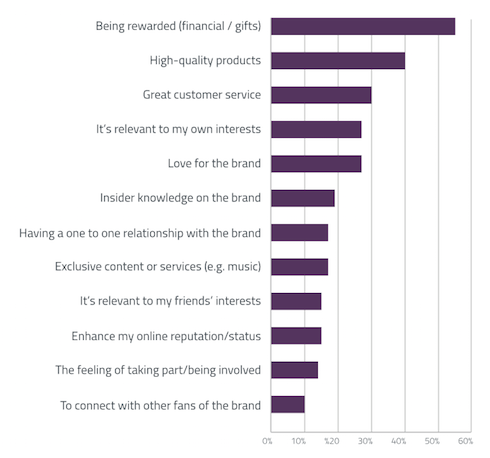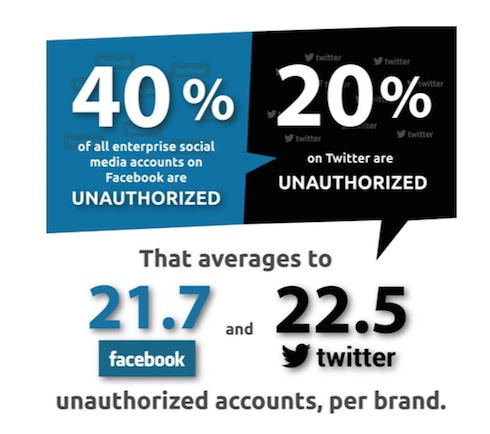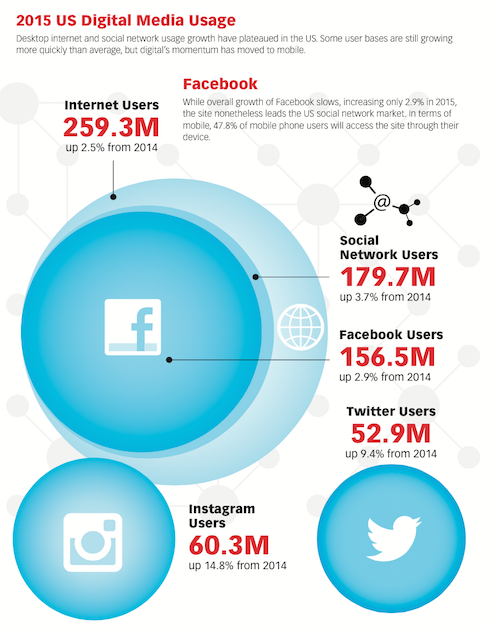By Liam Dowd - December 17th, 2014
Why social media networks are under attack. US digital media snapshot for 2015, and digital marketing trends for next year.
55% of Internet users would advocate a brand if they received some form of reward in return.
This is one of the findings included in the GWI Brand Survey for Q3 2014. Rewards are the greatest motivator across all the demographic breaks and motivate the majority of Internet users in all but three of the countries covered by GWI. A quarter would recommend a brand because it is relevant to their own interests or out of simple love for it.
Among 16-24s, loving a brand is now almost as important a motivator as high-quality products. 16-24s value exclusive content and being involved with brands more than other age groups, while the most affluent consumers are more likely to be influenced to promote brands by insider knowledge or by a one-to-one relationship with a brand.
Of the Big 3 Networks, Facebook can claim the largest active user base as well as the most brand-engaged audience.
Almost half of the site’s active users say they have visited a branded page in the last month, while 4 in 10 have started following (or “liked”) a new brand. However, the potentially temporary nature of these relationships is clear: 3 in 10 Facebook users have recently “un-liked” a brand. Interestingly, fewer Google+ users might be following new brands each month (30%) but they are also less likely to stop engaging – just 16% have recently un-followed a brand. Twitter’s ratio is even better still: 1 in 4 started following a brand last month while just 13% un-followed one.
25-34s are the most likely to follow a new brand on Google+ or Twitter but they are also the most likely to stop following one. On Facebook, 16-24s have a clear lead for un-following (38% have done so in the last month).
Social media networks under attack
According to the latest report from data management company NexGate that surveyed more than 300,000 Fortune 100 social media accounts, 40% are unauthorised and potentially open to cyber attack.
“Increasingly, the Fortune 100 are losing money, having their audiences attacked, and experiencing brand damage on their own social media presences,” said Devin Redmond, vice president and general manager of Nexgate for Proofpoint. “Company-affiliated social pages, profiles and accounts are the next big attack surfaces for fraud, phishing, hacking and data theft. Threats to corporate social media accounts and programs have not received the appropriate level of attention — much of that is due to the lack of understanding regarding the scope and types of security threats.”
Key findings from “The State of Social Media Infrastructure 2014, Part 2: Security Threats to the Social Infrastructure of the Fortune 100 include:
- There are three main categories of security threats including unauthorized accounts, social account compromises, and harmful content.
- On average, two out of five (40%) Facebook accounts claiming to represent a Fortune 100 brand are unauthorized.
- On average, one out of five (20%) Twitter accounts claiming to represent a Fortune 100 brand are similarly unauthorized.
- In aggregate, Fortune 100 brands are experiencing at least one compromise per business day on their social media channels.
- Social media spam grew sevenfold since mid-2013 when the previous “State of Social Media Spam” report was released.
With the rise of employee-lead social media advocacy, corporations need to pay close attention to their security protocols to ensure these networks are leveraged in a safe and secure environment.
US digital media snapshot 2015
This Snapshot provides a key to digital media usage trends next year and how they will be different from this year’s patterns. The research was completed by eMarketer and presented by Monetate and includes infographics illustrating social media, video viewing, tablet m-commerce and tablet and smartphone usage figures—critical for marketers to understand as they develop campaigns to target the growing online and mobile populations.
15 marketing trends for 2015
Bell Pottinger Digital has gotten out their crystal ball to look ahead to next year. James Thomlinson, partner and managing director of Bell Pottinger Digital, says: “While technology will be one of the biggest drivers of marketing change in the New Year, the key focus for brands will be on delivering truly integrated strategies.
“Every year new hardware and software appears, but the most successful brands in 2015 will be those that harness new technology to deliver a single experience to consumers wherever they are in their journey.”
A year on Google
Google has released its annual year in search list. The most popular searches across the world after Williams were: the World Cup; Ebola; Malaysian Airlines; ALS Ice Bucket challenge; Flappy Bird; Conchita Wurst; Isis; Frozen; Sochi Olympics.
In the UK, the most searched for news items were: the Malaysian Airlines disaster; Luis Suarez biting another football player during a match; the Scottish referendum on independence. Globally, Ebola was the most searched-for news item, followed by Isis.
Until next time….
The Useful Social Media team.




